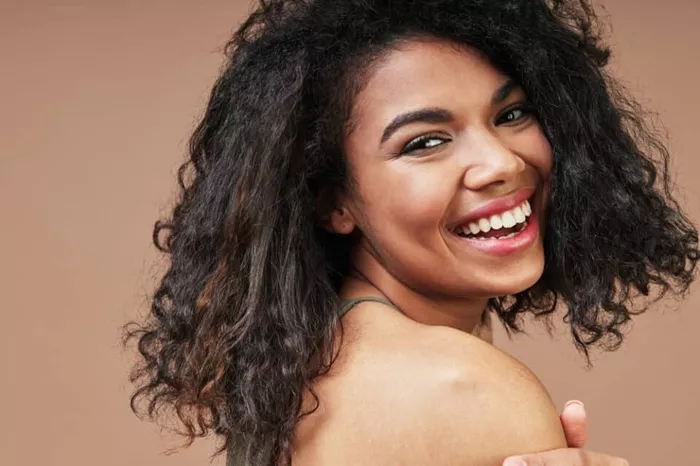For decades, people with straight hair have experimented with harsh chemicals, hot tools, and expensive salon treatments to achieve curly hairstyles. However, these methods often damage hair follicles, cause dryness, and lead to long-term breakage. The good news is that nature provides gentler alternatives that work with your hair’s biology rather than against it. This guide explores proven techniques to encourage natural curl formation while maintaining hair health. We’ll dive into methods rooted in hair science, traditional practices from global cultures, and modern DIY approaches that anyone can try at home.
How Hair Texture Works: The Science Behind Curls
Understanding your hair’s structure is crucial before attempting any transformation. Each strand contains keratin proteins arranged in bonds that determine its shape. Straight hair has symmetrical disulfide bonds while curly hair features asymmetrical patterns. Although genetics primarily control these bonds, temporary changes can occur through physical manipulation and moisture absorption. The cortex layer’s hydrogen bonds temporarily reform when exposed to water or humidity, creating opportunities for reshaping. By working with these biological processes instead of using extreme heat or chemicals, you can coax straight hair into holding natural-looking curls that gradually become more defined with repeated practice.
Ancient Braiding Techniques That Create Lasting Waves
Civilizations worldwide have used braiding to transform hair textures for centuries. The African tradition of Bantu knots, Viking rope braids, and Greek goddess waves all rely on strategic twisting to reshape hair. For straight hair, start with damp (not soaking wet) hair divided into 4-6 sections. Create tight three-strand braids or twist sections clockwise from roots to ends. Secure with silk scrunchies to prevent creases. Sleep with this style covered by a satin bonnet. The compression forces hair fibers into new positions while overnight drying “trains” strands to hold shape. For enhanced results, apply a flaxseed gel mixture (boiled flaxseeds strained through cheesecloth) before braiding. This natural holding agent strengthens waves without sticky residues. Over 2-3 months of weekly braiding sessions, many users report semi-permanent curl patterns emerging.
Kitchen Ingredients That Activate Natural Curl Potential
Your pantry holds surprising curl-enhancing power. A coconut milk and honey mask (1/2 cup coconut milk + 2 tbsp raw honey) applied for 45 minutes before washing helps loosen straight hair’s tight cuticle layer. The lauric acid in coconut milk penetrates the shaft while honey’s humectant properties boost moisture retention – both crucial for curl formation. For post-wash styling, mix 1 tsp sea salt with 1 cup chamomile tea in a spray bottle. Lightly mist hair section by section, scrunching upward to encourage wave clusters. The salt slightly roughs up the cuticle for texture while chamomile’s natural lipids add softness. Those with color-treated hair should substitute salt with 1 tbsp aloe vera gel to prevent dryness.
Movement-Based Methods for Effortless Curls
Physical stimulation can awaken dormant curl patterns. Try the “plopping” technique: after applying curl cream, flip hair forward onto a cotton T-shirt laid flat. Gather the shirt edges upward to create a loose turban that holds hair against the scalp. This allows curls to form as hair dries naturally from root to tip. Another option is “rope twisting” – take 1-inch sections, roll them between palms like clay snakes, then coil into buns. The friction and tension create memory that lasts 8-12 hours. For immediate beachy waves, do 10 minutes of headstands or yoga inversions after dampening hair. Blood flow to the scalp combined with gravitational pull creates voluminous bends that set as hair dries.
Nutrition and Hair Care Habits for Curly Transformation
What you eat significantly impacts curl potential. Increase intake of omega-3 fatty acids (walnuts, salmon) to improve hair elasticity for better shape-holding. Biotin-rich foods like eggs and almonds strengthen keratin bonds. Silica from cucumbers and bell peppers enhances moisture retention in the cortex layer. Externally, adopt a “curly girl method” adapted for straight-to-curly transitions: wash with sulfate-free cleansers only twice weekly, using bentonite clay masks monthly to remove buildup. Always detangle with fingers or wide-tooth combs starting from ends. Sleep on silk pillowcases to reduce friction that straightens overnight curls. With consistent care, hair becomes more responsive to natural curling methods over 6-8 weeks.
Troubleshooting Common Challenges
Many initially struggle with uneven curl patterns or frizz. If some sections remain stubbornly straight, try targeted treatments – apply yogurt mixed with crushed papaya (contains natural enzymes) to resistant areas for 20 minutes before washing. For frizzy results, replace salt sprays with avocado oil spritzes. Those with thick hair may need extended braiding times (10-12 hours) while fine-haired individuals should opt for loose twists to avoid kinks. Remember that humidity affects outcomes; drier climates require heavier creams while humid areas need lighter gels. Most importantly, embrace transitional phases – hair may appear wavy before developing full spirals. Document progress with monthly photos to track subtle changes.
Conclusion
Transforming straight hair into natural curls isn’t an overnight process but a journey of working with your hair’s unique biology. By combining moisture-rich treatments, mechanical shaping techniques, and nutritional support, you can gradually encourage lasting curl formation without damage. Consistency proves key – most users see noticeable changes within 2-3 months as hair adapts to new patterns. Celebrate small victories like increased volume or spontaneous waves after air-drying. With dedication to these natural methods, many find their hair eventually maintains curls with minimal styling effort, proving that patience and gentle care unlock stunning natural texture.
Related topics:
How to Easily French Braid Hair
How to Do Cool Hairstyles on Yourself
How to Dress Up a Short Ponytail


